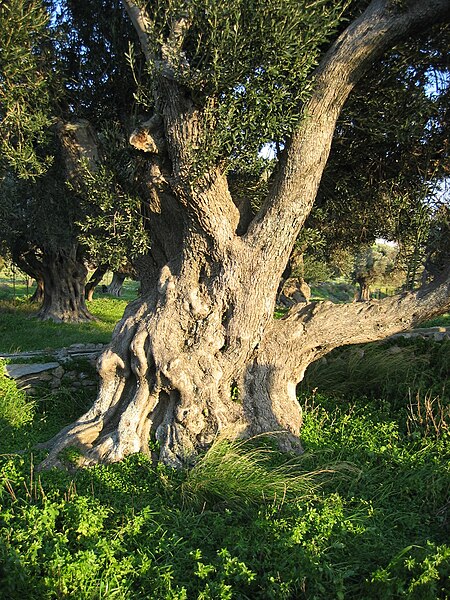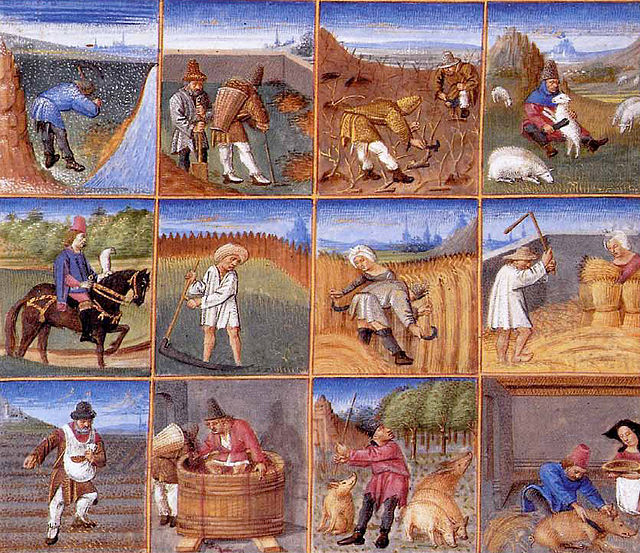Agriculture in ancient Greece
Agriculture was the foundation of the Ancient Greek economy. Nearly 80% of the population was involved in this activity.
Harvesting olives. British Museum
An ear of barley, symbol of wealth in the city of Metapontum in Magna Graecia (i.e. the Greek colonies of southern Italy), stamped stater, c. 530–510 BCE
Bronze billygoat found in the deme of Kephissia, 5th century BCE, Louvre
The olive; a foundation of Greek agriculture – here in Karystos, Euboea
Agriculture encompasses crop and livestock production, aquaculture, fisheries, and forestry for food and non-food products. Agriculture was the key development in the rise of sedentary human civilization, whereby farming of domesticated species created food surpluses that enabled people to live in cities. While humans started gathering grains at least 105,000 years ago, nascent farmers only began planting them around 11,500 years ago. Sheep, goats, pigs, and cattle were domesticated around 10,000 years ago. Plants were independently cultivated in at least 11 regions of the world. In the 20th century, industrial agriculture based on large-scale monocultures came to dominate agricultural output.
Winnowing grain in Ethiopia.
Centres of origin, as numbered by Nikolai Vavilov in the 1930s. Area 3 is no longer recognised as a centre of origin New Guinea (area P) was identified more recently.
Agricultural scenes of threshing, a grain store, harvesting with sickles, digging, tree-cutting and ploughing from ancient Egypt. Tomb of Nakht, 15th century BC
Agricultural calendar, c. 1470, from a manuscript of Pietro de Crescenzi








